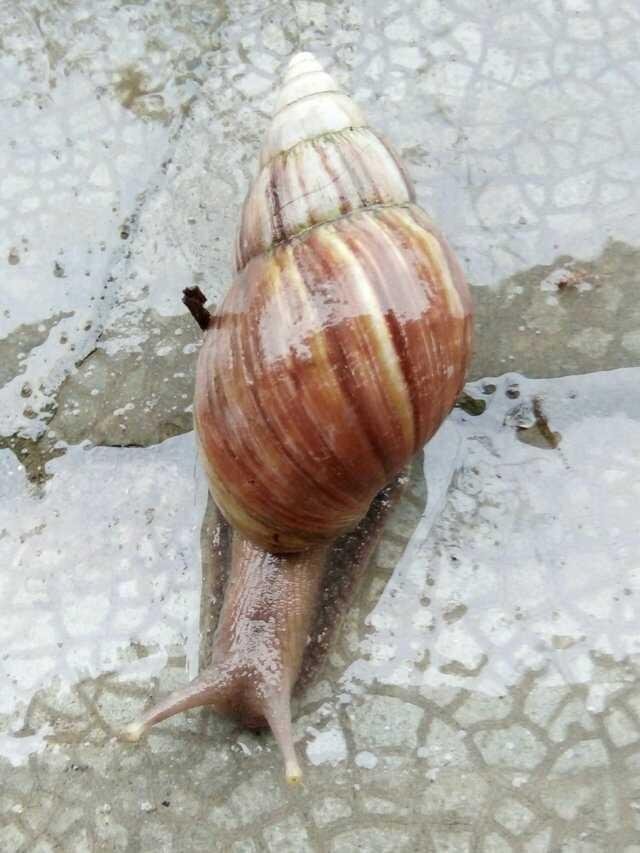Good night, all the friends of steemians ...
On this occasion I will try to discuss a little about animals namely snail animals.

Snails are a type of mollusk, the Gastropod class which has rotating shells. Invertebrates. Snails have hard shell skin. Other gastropods who do not have shells are recognized as moon leeches. Snails are found in fresh water, salt water, and on land.

Biology
The snail moves like a worm by swapping the body's rotating turns by reaching, at a slow pace. Snails are often compared with something slow like "Slowly like a snail".
Snails produce mucus to help with movement by reducing shear. Mucus also avoids snails from injury and helps keep away harmful insects such as ants. In the winter, some snails in the cool country take a break inside their shells by covering the openings of the shell with a nipus skeleton like a plate that is specially built for this purpose. This nipus skeleton will be destroyed in the spring season.

Food
Snails are eaten in several European countries, where snails are considered a special dish. Snails for food are usually recognized by the French name "escargot."
The best snails to make food are than the Helix pomatia species. War park snails (European war snails - "European brown snail") are also known as, Helix aspersa. Both species belong to the Helix Genus.
Snails are found in various sizes. The biggest land snail is the African Glacier (Achatina fulica), which has a size of 30 cm. Pomacea maculata (Ampullariidae), or Epal Gergasi snail is the largest freshwater slug, with a central stripe size of 15 cm and weighing 600 grams. The biggest snail is Syrinx aruanus, a salt water slug found in Australia. A one meter meter has been reported.
Internal anatomy
A snail breaks its food using a radula, that is, a cytin structure containing a bowl of adihalus is called cuticulae. With it the snail will spread the food, which will be delivered to the drainage channel. This is why a large land snail can be chewed on its food: because the radula rips what it is eating.
The cerebral ganglion for the shape of a snail in one primitive brain is divided into four parts. This structure is much easier than the brains of mammals, reptiles and birds, however, snails are able to understand attachments.
By, @wondo
Thank you so much for sharing this amazing post with us!
Have you heard about Partiko? It’s a really convenient mobile app for Steem! With Partiko, you can easily see what’s going on in the Steem community, make posts and comments (no beneficiary cut forever!), and always stayed connected with your followers via push notification!
Partiko also rewards you with Partiko Points (3000 Partiko Point bonus when you first use it!), and Partiko Points can be converted into Steem tokens. You can earn Partiko Points easily by making posts and comments using Partiko.
We also noticed that your Steem Power is low. We will be very happy to delegate 15 Steem Power to you once you have made a post using Partiko! With more Steem Power, you can make more posts and comments, and earn more rewards!
If that all sounds interesting, you can:
Thank you so much for reading this message!